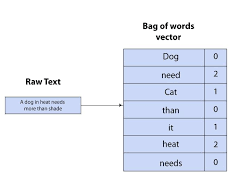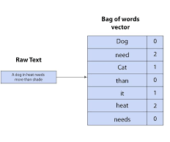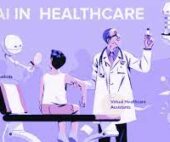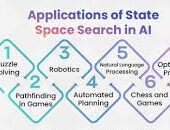Generative AI (GenAI) holds significant promise for improving healthcare documentation, but clear regulations and standards are needed to maximize benefits while minimizing risks. Healthcare documentation encompasses medical histories, clinical notes, diagnostic results, treatment plans, prescriptions, and billing records. Studies show that clinicians spend more time on documentation than patient care—a major contributor to burnout. GenAI can help by automating electronic health record (EHR) data entry and drafting medical notes for clinician review.
According to a February 2025 American Medical Association (AMA) survey, early GenAI adoption in healthcare focuses on administrative tasks that enhance documentation quality and efficiency. For example, Microsoft’s Dax Copilot saves clinicians five minutes per patient encounter, while Oracle Health Clinical AI Agent reduces documentation time by nearly 30%.
Here are five key ways GenAI improves healthcare documentation:
1. Streamline Workflows
GenAI reduces administrative burdens by automating documentation tasks, allowing clinicians to focus more on patient care. Key applications include:
- Automating clinical notes – AI-powered medical scribes transcribe patient encounters in real time, generating draft notes for review.
- Customizing note templates – GenAI tailors SOAP (Subjective, Objective, Assessment, Plan) and BIRP (Behavior, Intervention, Response, Plan) templates for specialties, languages, and patient populations.
- Summarizing telehealth visits – AI drafts structured visit notes post-telemedicine appointments.
- Generating shift reports – AI compiles key patient updates (e.g., vitals, medication changes) for smoother care transitions.
- Drafting referral letters & lab requests – Integrated with EHRs, GenAI extracts patient data to personalize referral and lab order drafts.
A JAMA Network Open (2024) study found AI-generated draft replies to patient messages reduced provider workload and emotional exhaustion, suggesting strong potential for workflow efficiency.
2. Improve Data Accuracy
GenAI enhances documentation precision by identifying missing or inconsistent data. Applications include:
- Assisting with EHR data entry – AI auto-populates fields and flags incomplete records.
- Automating prior authorizations & billing – AI extracts relevant data from EHRs to pre-fill forms, reducing manual errors.
- Validating insurance codes – AI cross-checks medical codes against payer rules to minimize claim denials.
By minimizing manual entry, GenAI helps prevent errors that lead to billing delays or compliance issues.
3. Optimize Medical Data
Approximately 80% of healthcare data is unstructured (e.g., physician notes, scanned documents). GenAI transforms this into structured, usable formats by:
- Reformatting data for compliance – AI aligns documentation with HL7, FHIR, and ICD-10 standards.
- Standardizing lab & imaging reports – AI normalizes disparate report formats for easier clinician review.
- Digitizing paper records – AI extracts text from scanned documents via optical character recognition (OCR).
- Summarizing patient data – AI aggregates structured and unstructured data into concise clinical narratives.
This optimization improves interoperability and speeds up decision-making.
4. Reduce Clinician Burnout
Physician burnout is often linked to excessive documentation. GenAI alleviates stress by:
- Freeing up time for patient care – Reducing paperwork allows more face-to-face interaction.
- Minimizing after-hours charting – AI-assisted documentation during visits reduces overtime work.
- Enhancing decision-making – AI surfaces relevant patient data in real time.
- Improving provider communication – AI translates medical jargon into clear language for care teams.
A UC San Diego (2024) study found that AI-assisted documentation helps clinicians engage more with patients, improving satisfaction and outcomes.
5. Enhance Patient Engagement
GenAI improves patient interactions by:
- Personalizing care plans – AI analyzes patient histories to tailor treatment recommendations.
- Simplifying post-visit instructions – AI explains medical terms in the patient’s preferred language.
- Automating portal responses – AI drafts replies to patient messages for clinician review.
- Tracking wellness progress – AI generates progress reports for chronic disease management.
- Powering healthcare chatbots – AI assists with appointment scheduling, FAQs, and after-hours support.
By reducing screen time during visits, GenAI helps clinicians build stronger patient relationships.
Best Practices for GenAI in Healthcare Documentation
To ensure safe and effective AI adoption:
✔ Start with pilot programs – Test AI tools in controlled settings.
✔ Train clinicians on AI review – Ensure staff can validate AI-generated content.
✔ Notify patients about AI use – Maintain transparency in documentation.
✔ Secure patient data – Encrypt and de-identify protected health information (PHI).
✔ Maintain audit logs – Track AI-generated documentation for accuracy and compliance.
Challenges & Future Outlook
GenAI faces hurdles in data privacy, regulatory compliance, and liability. Until formal standards emerge, frameworks like the WHO’s AI Ethics Guidelines and Coalition for Health AI (CHAI) Assurance Standards can help guide responsible use.
As multimodal AI models advance, GenAI will better adapt to clinician workflows. However, strong governance is essential to balance innovation with patient safety.
Conclusion
GenAI is transforming healthcare documentation by reducing burnout, improving accuracy, and enhancing patient engagement. By implementing best practices and robust governance, healthcare organizations can harness AI’s potential while mitigating risks.
Content updated April 2025.














